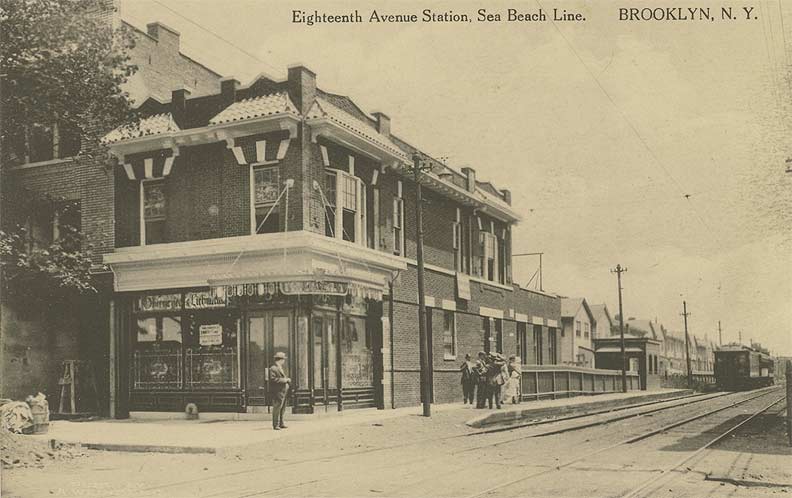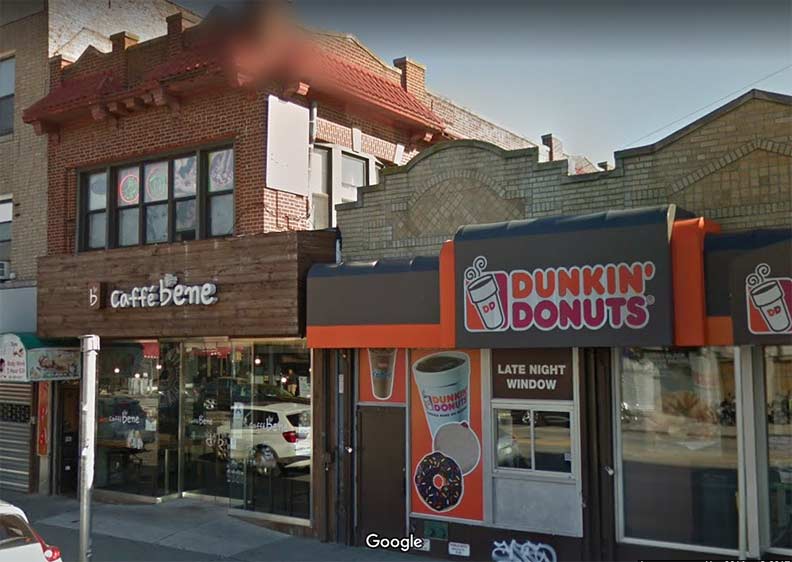
photo: Greater Astoria Historical Society
Today, subways are identified by pretty much everyone in NYC by their letter or number. This is a convention that has been in place going back to the 1920s, when Interborough Rapid transit and Brooklyn-Manhattan Transit lines were given identifying numbers. As those lines were run by different competing companies, they saw no problem in some numbers were duplicated. In the 1930s, the Independent Subway lines were identified by letters, and when the Christie Street connection in Chinatown allowed IND and BMT trains to run on the same tracks, BMT trains switched over to letters–helpfully, different letters than the ones already used by the IND.
Not only were individual subway lines identified by name, but there were names for individual routes. In southern Brooklyn, rapid transit lines were originally steam railroad lines that were built to take passengers to seaside resorts in Coney Island and Manhattan Beach, and were named for the West End Hotel, Brighton Hotel and Sea Beach Palace Hotel; only the Culver was named for its founder, Andrew Culver.
Over time, the IRT, BMT and IND division names fell out of favor as did the West End, Brighton, Culver and Sea Beach. Until the 1970s, however, just about every Brooklynite knew what lines were meant by these names. Every 20 years, just for fun, apparently, the Metropolitan Transit Authority changes the routes, so the letter designations are in flux. Perhaps, we should return to these older designations. For the moment, the N train, and occasionally the W, runs on the Sea Beach Line.
The New York and Sea Beach Railroad ran from a ferry landing in Bay Ridge to the Sea Beach Palace Hotel in Coney Island beginning in 1876, the country’s centennial. At first, it was a steam railroad running through open country, through an occasional small settlement or town. Brooklyn became slowly urbanified in the late 19th Century and a street grid appeared, with the railroad then running in a right of way between 63rd and 64th Streets as far as 21st Avenue, when it turned south and ran between West 7th and 8th Streets.
The NY& SB RR was sold to Brooklyn-Manhattan Transit in 1898, which electrified the line, installing a third rail. That is the scene you see above in the photo taken about 1905 at the 18th Avenue stop. People are waiting for an approaching northbound coach. North of here, the Sea Beach had a connection to the 5th Avenue El, which crossed into Manhattan via the Brooklyn Bridge.
Big changes came in 1914-1915. A new BRT tunnel connecting to the Manhattan Bridge was constructed. We know it today as the 4th Avenue Line carrying R trains. The BRT included express tracks on the line, and the Sea Beach was connected to the 4th Avenue Line tunnel, with Sea Beach trains running to Chambers Street, then 14th Street, 42nd Street and by 1987, Astoria. Meanwhile, the Sea Beach Line was placed in the lengthiest open cut in the NYC subways, with an express track to Coney Island that wound up being used only sparingly, from Chambers Street to Coney Island in the 1910s and in 1967-68, from the Broadway Line to Coney (the Chambers Street connection to the Manhattan Bridge was eventually severed in favor of a connection to the 6th Avenue lines). Crossing Avenues were bridged over the open cut, with station houses built at stops along the line. The Sea Beach paralleled the Long Island RR Bay Ridge Branch between 4th and New Utrecht Avenue, but the Bay Ridge LIRR had abandoned passenger service by 1924.
[I’m a little off on this info. See Andy Sparberg’s comment below. –ed]

The Street View photo from 2016 was taken in the same spot about 110 years after the first. The building besides the tracks remains in place, with a Caffé Bene coffee shop occupying the front instead of the tavern in the 1905 photo. The stationhouse and entrance are across the street.
I’ve simplified the Sea Beach Line story somewhat. Read the whole thing here.
Check out the ForgottenBook, take a look at the gift shop, and as always, “comment…as you see fit.”
11/16/17